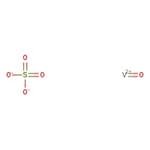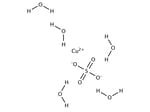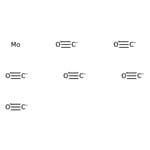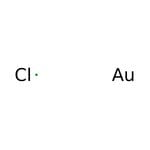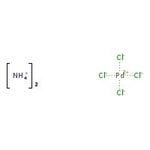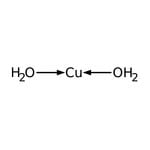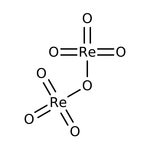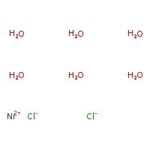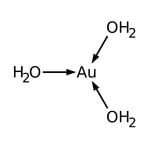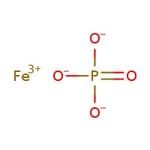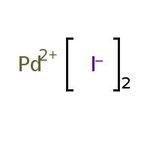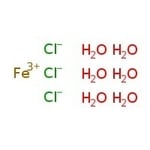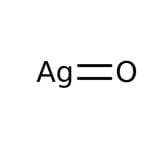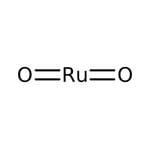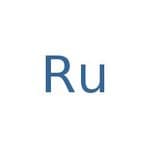Search Thermo Fisher Scientific

Transition Metal Salts
Transition metal salts are inorganic compounds made of transition metal cations. Transition metals are elements found in groups 4 to 11 of the periodic table.
Products (1219)
Learn More (14)
Documents & Support
(9)1219 Products
Filter
Vanadium(IV) sulfate oxide hydrate is used as a catalyst for the oxidative aromatization of cyclohexenone. It is also used as a component in some food supplements. It is one of the intermediate during the extraction of vanadium from petroleum residues.
This product is GMP Manufactured and meets BP, EP, and USP specifications.
This Thermo Scientific Chemicals brand product was originally part of the Acros Organics product portfolio. Some documentation and label information may refer to the legacy brand. The original Acros Organics product / item code or SKU reference has not changed as a part of the brand transition to...
It is used in colloidal gold solutions, in photography and as a print toning agent(gold toning), starting solution to form other gold compounds and a precursor for preparation of ultra pure gold metal. It is used in electroplating and electroless plating as an anode in an electric cell.
This Thermo Scientific Chemicals brand product was originally part of the Acros Organics product portfolio. Some documentation and label information may refer to the legacy brand. The original Acros Organics product / item code or SKU reference has not changed as a part of the brand transition to...
Used as a raw material in chemical processing and catalyst manufacturing. Copper(II) hydroxide is used as ceramic colorant. In organic synthesis, it is used as a catalyst to prepare 1-((2-aminoethyl)amino)anthraquinone, 1-amino-4-((2-aminoethyl)amino)anthraquinone by reacting with...
Rhenium(VII) oxide is a precursor to organorhenium oxides which catalyze olefin oxidation, metathesis and other transformations. It is also used as a catalyst for hemiacetal substitution and as an oxidant.
This Thermo Scientific Chemicals brand product was originally part of the Acros Organics product portfolio. Some documentation and label information may refer to the legacy brand. The original Acros Organics product / item code or SKU reference has not changed as a part of the brand transition to...
Gold(III) hydroxide is used in medicine, porcelain making, gold plating, and daguerrotypes. Used for preparation of gold catalysts. This Thermo Scientific Chemicals brand product was originally part of the Alfa Aesar product portfolio.
This Thermo Scientific Chemicals brand product was originally part of the Acros Organics product portfolio. Some documentation and label information may refer to the legacy brand. The original Acros Organics product / item code or SKU reference has not changed as a part of the brand transition to...
Used as catalyst. Also used as pharmaceutical intermediates. This Thermo Scientific Chemicals brand product was originally part of the Alfa Aesar product portfolio. Some documentation and label information may refer to the legacy brand.
This Thermo Scientific Chemicals brand product was originally part of the Acros Organics product portfolio. Some documentation and label information may refer to the legacy brand. The original Acros Organics product / item code or SKU reference has not changed as a part of the brand transition to...
Silver(II) oxide is used to make silver oxide-zinc alkali batteries. It is also used as a reagent in laboratory reactions and forms transition metal-carbene complexes. It is also used as a catalyst to prepare silver metal.
The most often used oxygen catalyst is ruthenium(IV) oxide. It is applied as an electrochemical super capacitor material, and it has high capacity to store charge. RuO2 is used as catalyst in the Deacon process which produces chlorine through the oxidation of hydrogen chloride.
This Thermo Scientific Chemicals brand product was originally part of the Alfa Aesar product portfolio. Some documentation and label information may refer to the legacy brand. The original Alfa Aesar product / item code or SKU reference has not changed as a part of the brand transition to Thermo...
Learn More (14)
View all
Inorganics are commonly defined as elements and compounds that do not contain a carbon-hydrogen bond. Examples of these include carbon monoxide, carbon dioxide, carbonates, cyanides, cyanates, and carbide, to name a few. This group also includes carbon allotropes such as graphite and graphene.
Structure search Chem dex search Element search, Inorganics generally consist of cations and anions joined by ionic bonding and include salts, metals, and single elements. These compounds commonly demonstrate high melting points and exhibit variable degrees of electrical conductivity.
Documents & Support (9)
View all
Application Note: Determination of Trace Transition Metals in Reagent Grade Acids, Bases, Salts, and Organic Solvents Using Chelation Ion Chromatography
Specification Sheet: IonPac CS5A Column and MetPac Reagents
